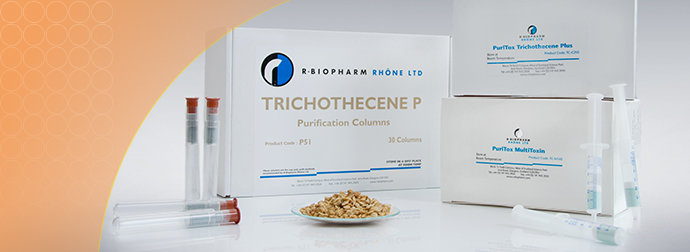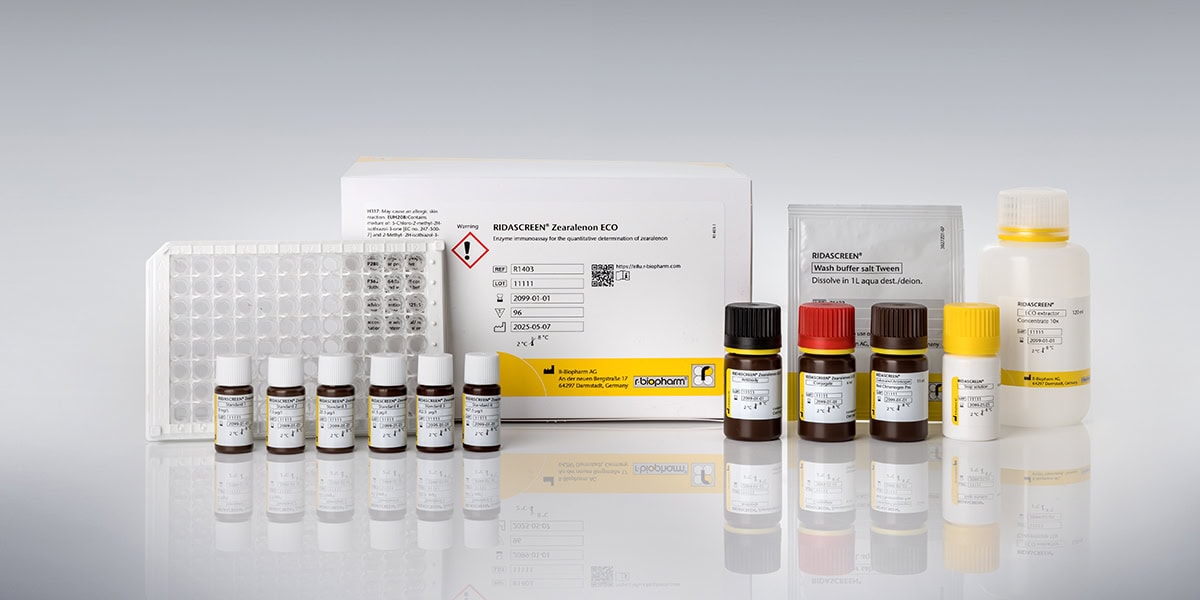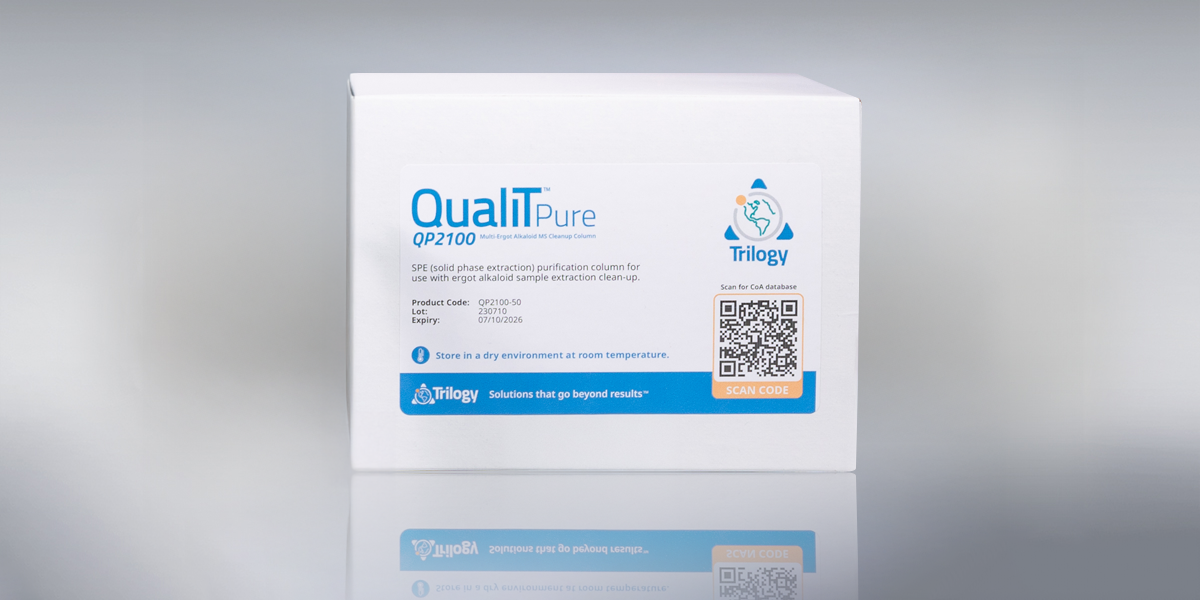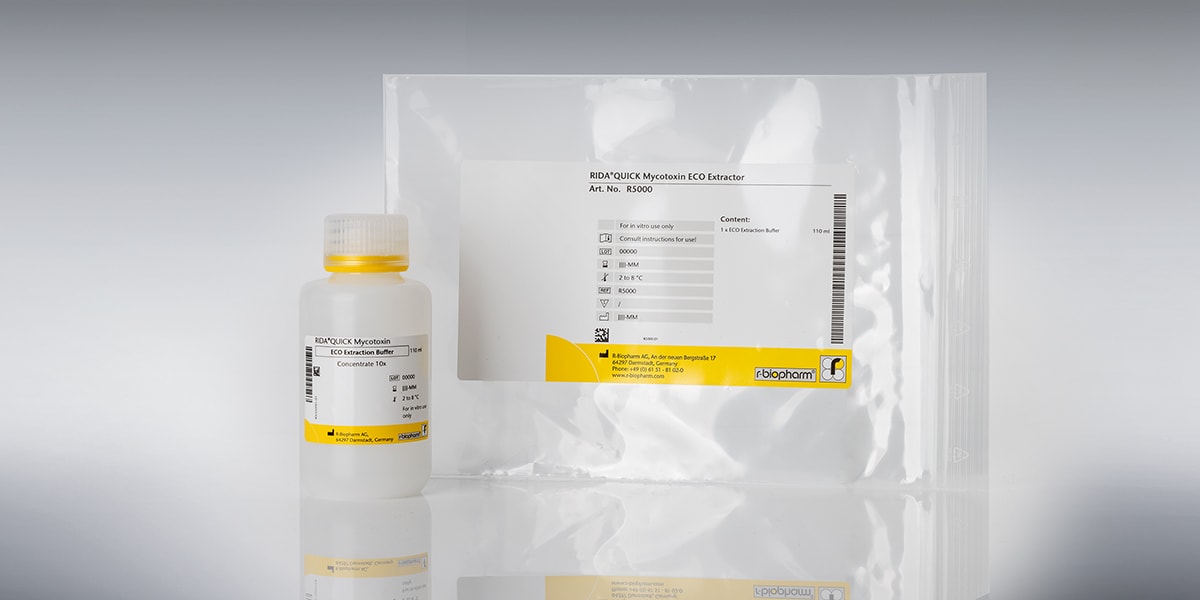
Recent news in Food & Feed Analysis
- Home
- /
- Trichothecenes: Boost your mycotoxin...
Trichothecenes: Boost your mycotoxin analysis with multi-analyte testing

Fungal infections can reduce crop yields and can also give rise to mycotoxin contamination. There are many different types of mycotoxins and they often occur simultaneously. Test methods which detect multiple mycotoxins in a single run make the analysis faster and more effective. Our wide range of products allows you to detect several trichothecenes in one analysis using a format of column that suits your requirements.
Mycotoxin detection is a challenge to many farmers, food producers and laboratories. On the one hand, the matrices to be tested are often very complex: For example, animal feed is difficult to analyze since the exact composition is often unclear. On the other hand, mycotoxin analysis poses a problem since there is a large number of mycotoxins that might be present in the product: About 300 types of mycotoxins are known to date, however multiple types of mycotoxins are often present in one food product.
One group of mycotoxins which is particularly relevant is the trichothecenes. These are mainly produced by molds of the Fusarium genus and are frequently found in cereals such as corn, wheat, oats and rye. Trichothecenes are hazardous: They have an immunosuppressive and cytotoxic effect and can cause vomiting, diarrhea and skin reactions. Contaminated feed can reduce growth and increase susceptibility to infections in livestock. Trichothecenes are classified into four subgroups (type A to type D) according to their chemical structure, with types A and B being the most relevant.
Important mycotoxins in the trichothecenes group
- T-2 toxin: This type A trichothecene co-occurs with HT-2 toxin. It’s highly toxic even in small concentrations.
- Deoxynivalenol (DON): The best-known type B trichothecene is also called vomitoxin due to its emetic effects. It occurs in grain worldwide and at relatively high concentrations.
- Nivalenol (NIV): This toxin has similar effects as DON and is another representative of the type B trichothecenes.
Analysis of multiple trichothecenes in a single run can be performed by screening methods based on GC or LC-MS/MS. These methods require a sample purification process (clean-up) using immunoaffinity columns (IAC) or solid phase extraction columns (SPE). There are different clean-up solutions available for specific toxins. More sophisticated SPE columns also provide the option of simultaneous clean-up for a wide range of trichothecenes. You will find an overview of the available systems for simultaneous clean-up for multiple trichothecenes in the following table:
| PuriTox Trichothecene | PuriTox DON/NIV | TRICHOTHECENE P | |
|---|---|---|---|
| Test format | SPE column (syringe) | SPE column (gravity flow) | SPE column (test tube) |
| Use with | GC or LC-MS/MS | GC or LC-MS/MS | GC or LC-MS/MS |
| Detection | Type A and B trichothecenes in cereal samples | Type A and B trichothecenes in cereal samples | Type A and B trichothecenes in cereal samples |
| Results | Reduces background interferences, producing better chromatography and improving accuracy of results | Reduces background interferences, producing better chromatography and improving accuracy of results | Reduces background interferences, producing better chromatography and improving accuracy of results |
| Duration | 30 minutes | 30 minutes | 30 minutes |
| Detection limit | 50 ng/ml | 50 ng/ml | 50 ng/ml |



